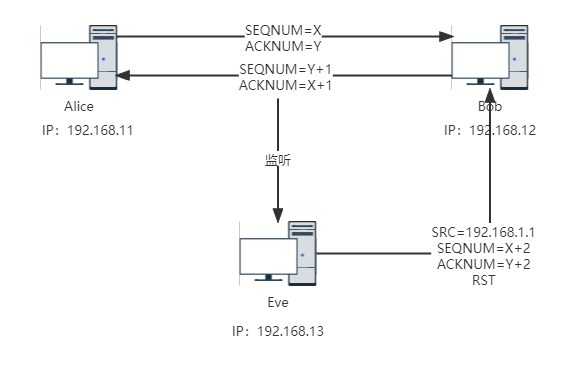传输层协议攻击
前言
传输层的主要协议是TCP、UDP。
流行的攻击方式:
- TCP RST攻击
- TCP会话劫持攻击
- TCP SYN洪泛拒绝服务攻击
TCP RST 攻击
又称伪造TCP重置报文攻击,假冒干扰TCP通信连接的技术方法。
在TCP协议头的标志位中拥有一个“reset”比特位,绝大部分数据包中该标志位都置为0,而一旦该标志为置为1,则接收该数据包的主机将立即断开这个TCP会话连接,不再利用该连接进行数据包发送和接收。
危害:
当恶意攻击者滥用TCP重置报文,就会对正常的网络通信造成严重。

如上图所示:
在TCP RST攻击中,攻击者Eve可以通过嗅探方式监视Alice和Bob之间的TCP连接,在获得源、目标IP地址及端口,以及序列号之后,就可以结合IP源地址欺骗技术伪装成通信一方(也就是伪装成Alice)发送TCP重置报文给Bob,在确保端口号一致及序列号落入TCP窗口之内的情况下,即可直接关闭这个TCP连接,造成通信双方正常网络通信的中断,从而达到拒绝服务的效果。








 最低0.47元/天 解锁文章
最低0.47元/天 解锁文章
















 704
704











 被折叠的 条评论
为什么被折叠?
被折叠的 条评论
为什么被折叠?










